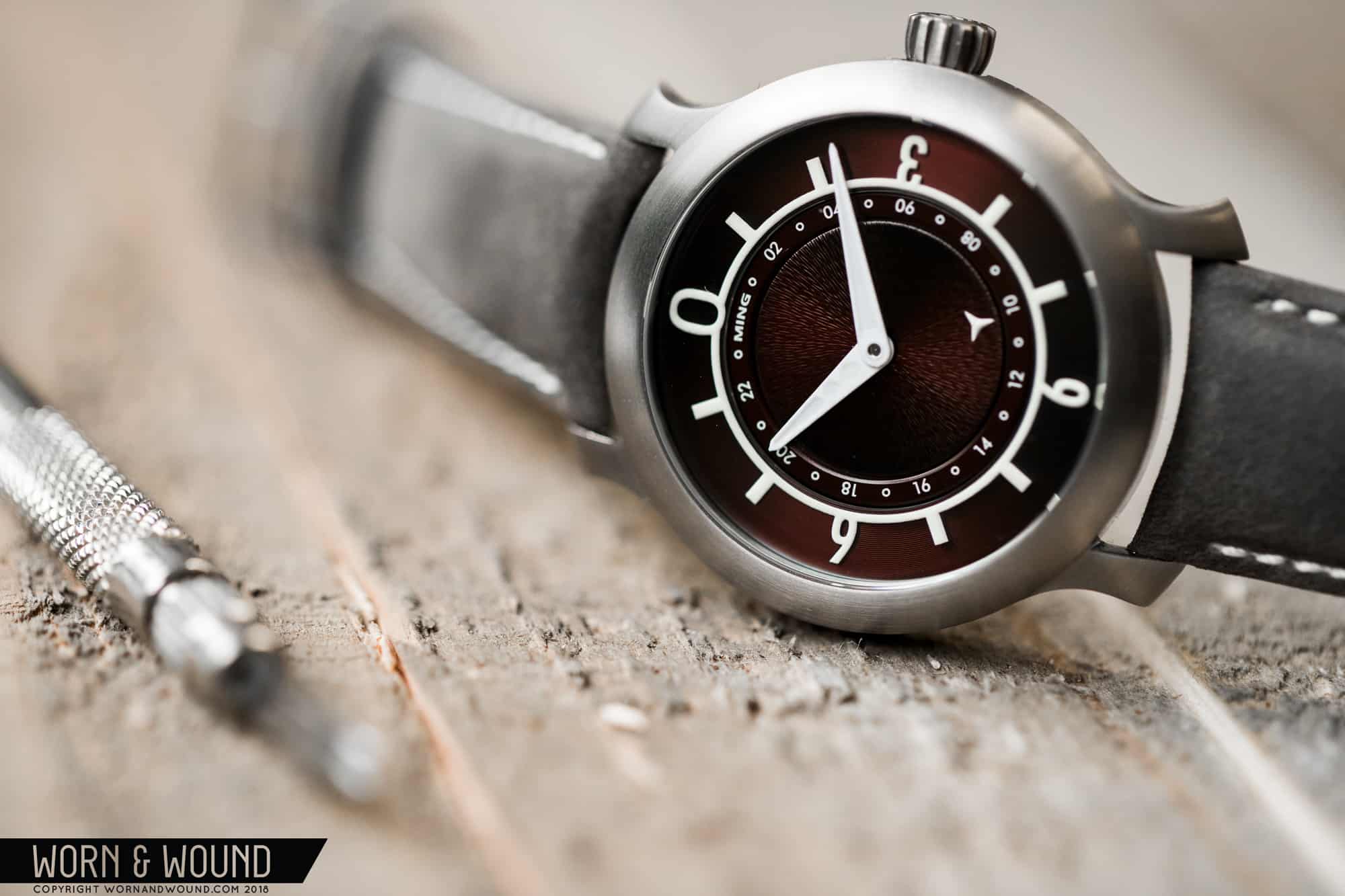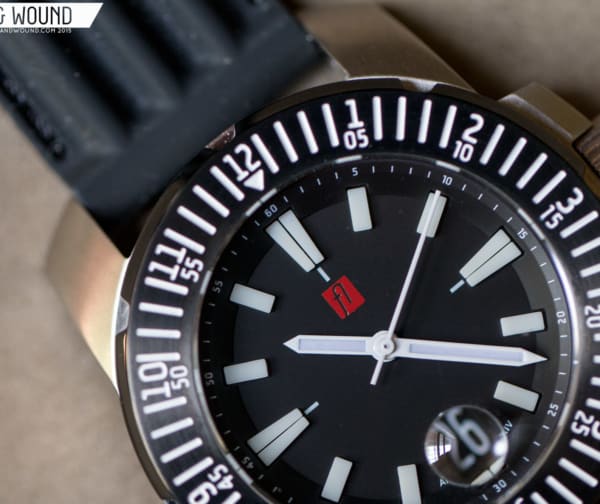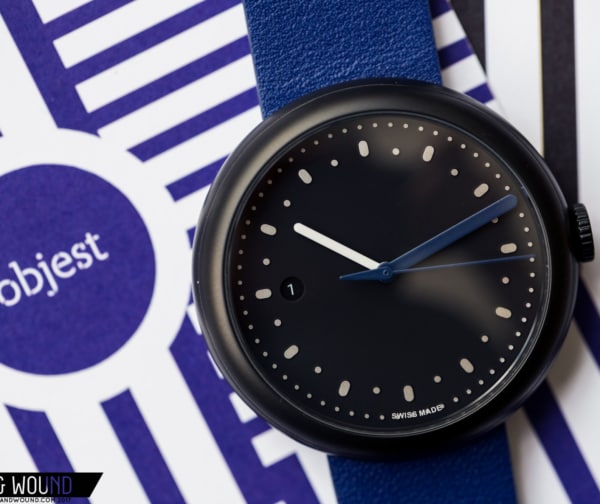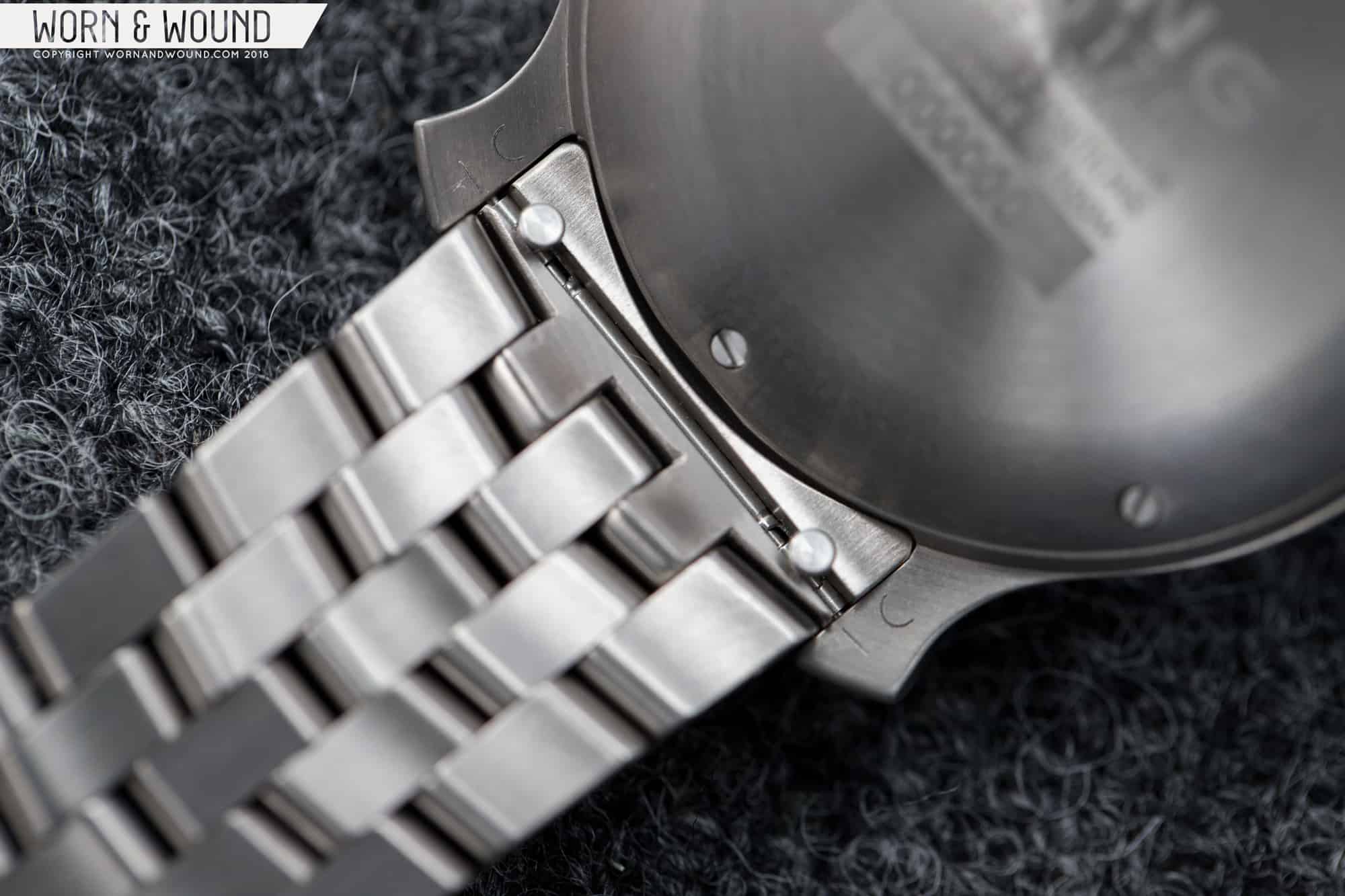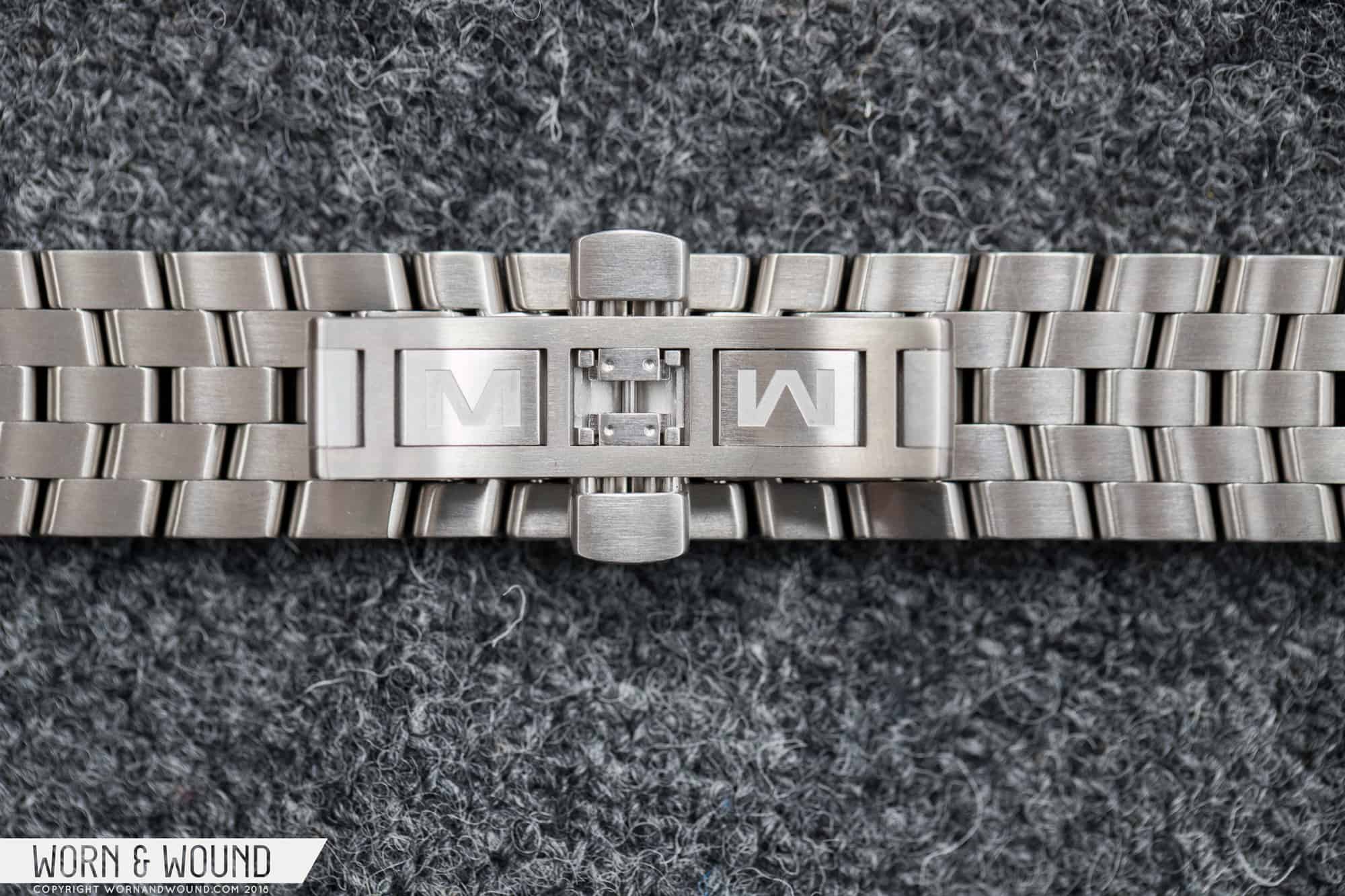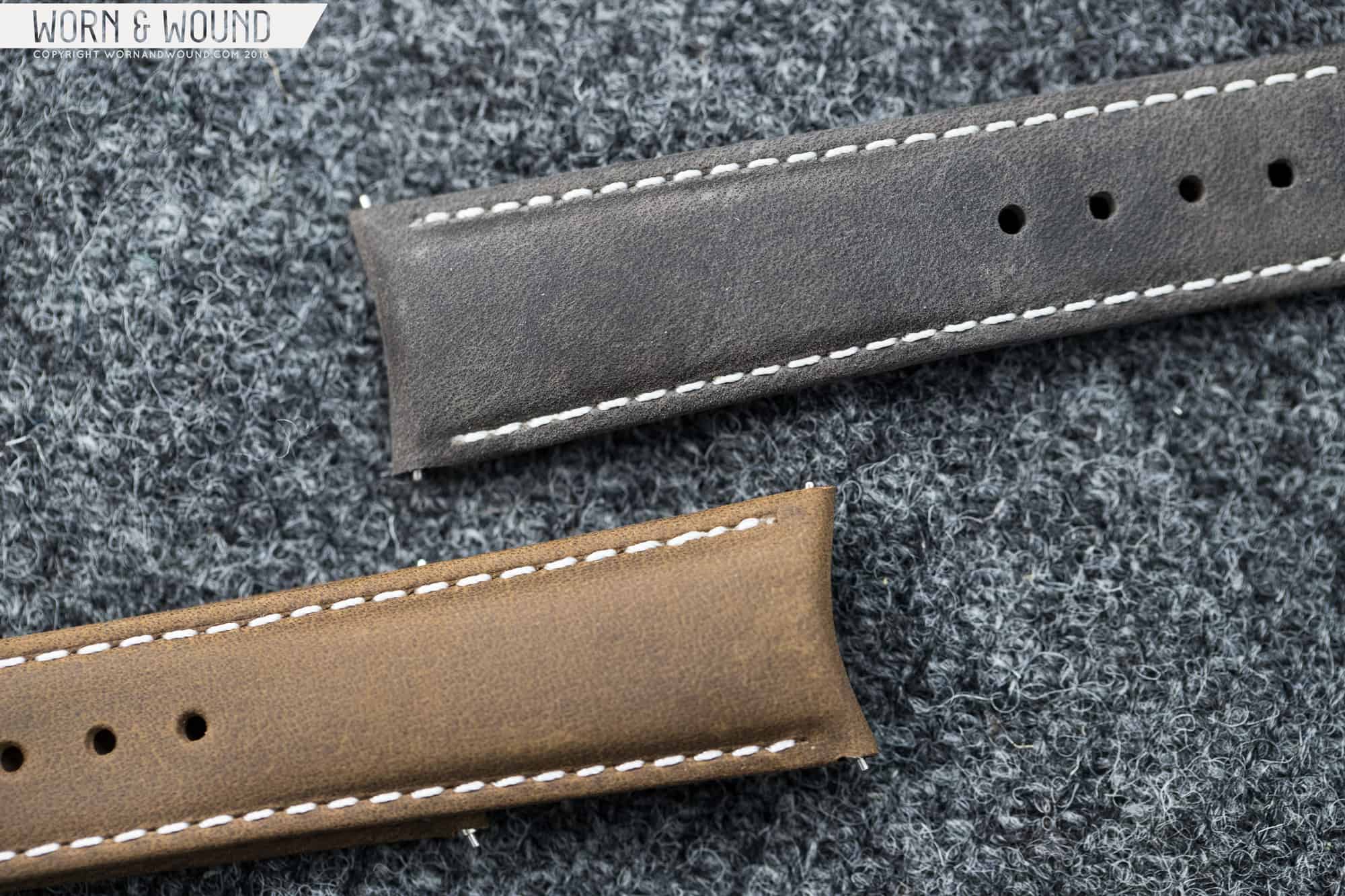Kuala Lumpur, the capital city of Malaysia, is home base to a small “horological collective” called Ming. These six folks are advancing watch design and the use of materials in rather unique ways. Led by photographer, designer, and watch collector Ming Thein, the other five members of the self-funded team are collectors of watches ranging from exemplary vintage pieces to six-figure one-offs.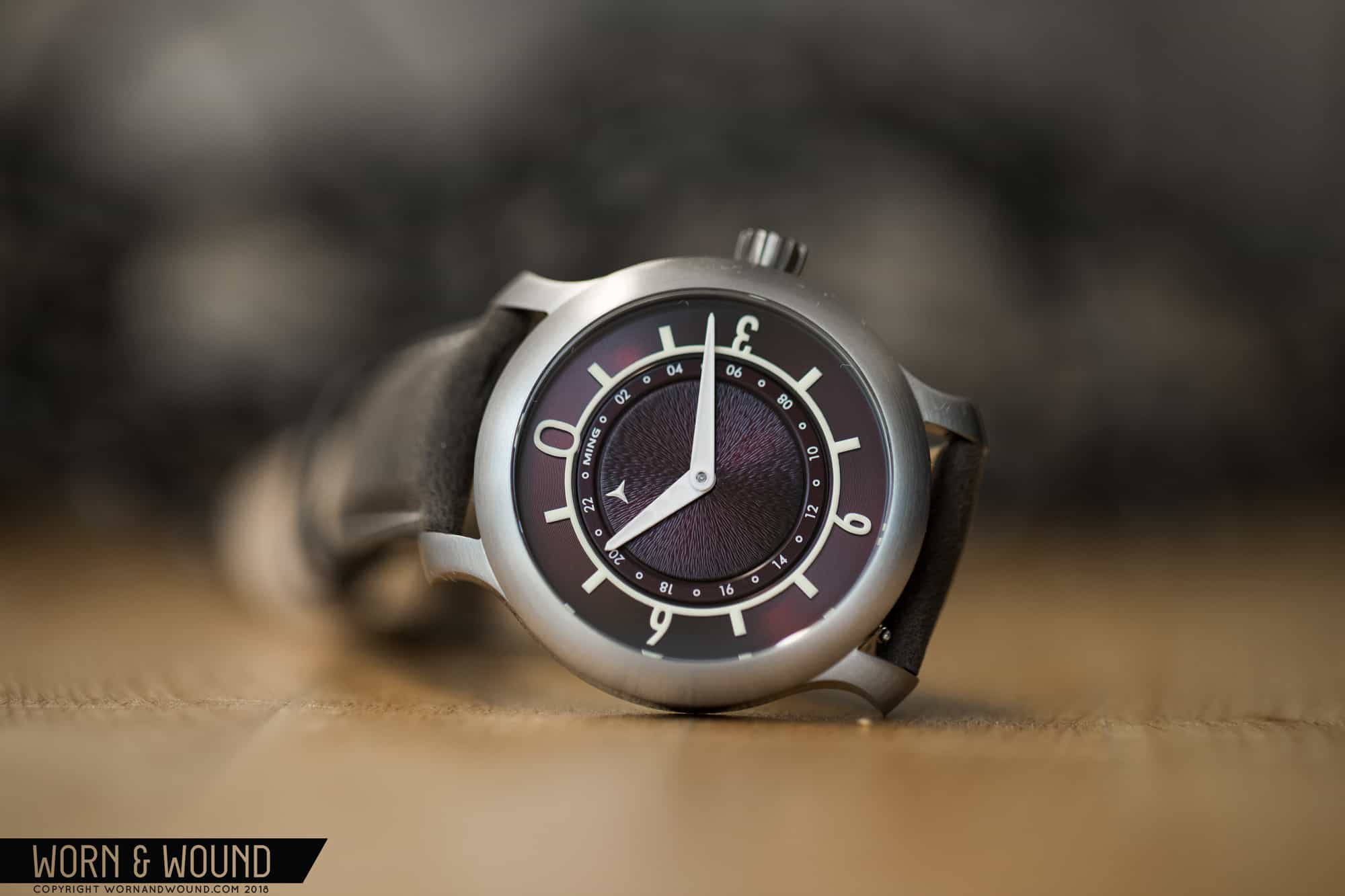 Though Ming’s 17-series watches represent the brand’s more affordable line, there is no sign of corner-cutting with the 17.03, which we have in hand for review. Nearly every aspect of this 38-millimeter GMT is unique, including the shapely titanium case and the layered dial with its sapphire overlay. Everything is made and assembled in Switzerland, with final inspection happening back in Kuala Lumpur.
Though Ming’s 17-series watches represent the brand’s more affordable line, there is no sign of corner-cutting with the 17.03, which we have in hand for review. Nearly every aspect of this 38-millimeter GMT is unique, including the shapely titanium case and the layered dial with its sapphire overlay. Everything is made and assembled in Switzerland, with final inspection happening back in Kuala Lumpur.
Review: Ming 17.03 GMT
Review: Ming 17.03 GMT
The “0” that stands in for the traditional 12 is the loudest announcement that Ming has gone their own way with the 17.03, That 0 also tells us that this watch is oriented to its GMT function. Meanwhile the mid-case, bezel, and solid case back are in brushed titanium, providing both a lighter overall weight (49 grams) and a warmer color than steel would have. Other unique features include two sets of spring bar mounting holes, the prominently curvy lugs, and the complexly layered dial.
The dial is comprised of three separate pieces. The main bottom plate provides the concentrically etched outer ring that’s visible beneath the sapphire “donut,” which holds the the main time markings. Those markings are in Super-LumiNova C1. Directly applying lume to sapphire is a relatively uncommon method, and unfortunately the application lacks precision on the copy we have here (we’ll have to see if others share this complaint). The third dial component is the solid, radially textured GMT disc in the center. Technically, this disc is a “hand” because Ming has mounted it to the arbor of the GMT module, but I’ll refer to it as a disc. Ming notes that their hand manufacturers were not able to render the GMT disc, so they worked with their Swiss dial maker on this component.
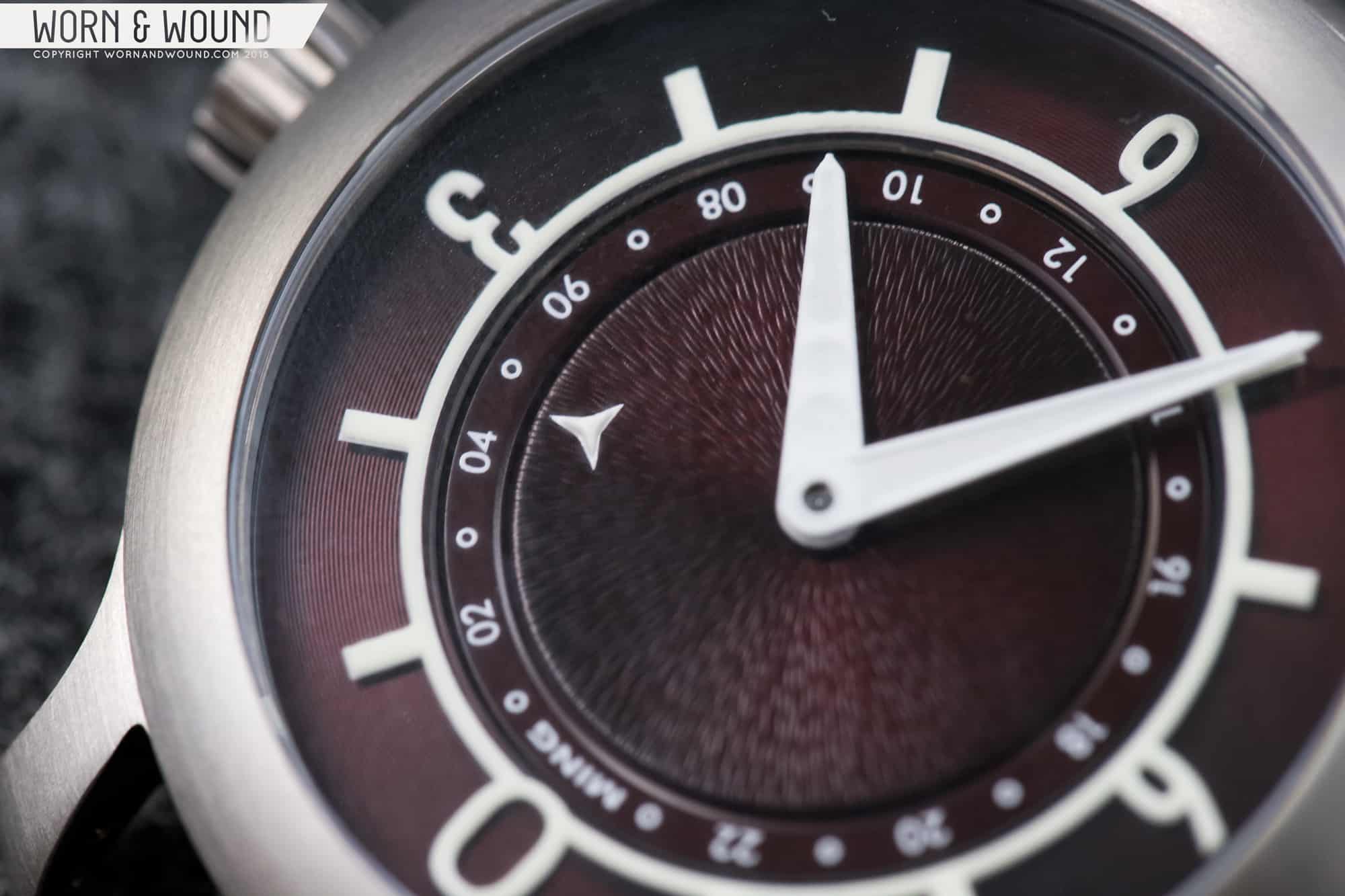 Despite its unconventional dial, functionally the 17.03 is not unique. A Sellita SW330-1 automatic GMT movement provides normal local time setting via the signed crown, while setting the GMT disc is done with the crown in position one. Notably, the 17.03 foregoes both a date aperture and a seconds hand. Ming’s Swiss manufacturer tunes the movements to work within the COSC tolerance of -4/+6 seconds per day. Once assembled, the watch is tested in five positions for 50 hours each, totaling 250 hours of regulation. The power reserve is 42 hours and the beat rate is 28,800 bph.
Despite its unconventional dial, functionally the 17.03 is not unique. A Sellita SW330-1 automatic GMT movement provides normal local time setting via the signed crown, while setting the GMT disc is done with the crown in position one. Notably, the 17.03 foregoes both a date aperture and a seconds hand. Ming’s Swiss manufacturer tunes the movements to work within the COSC tolerance of -4/+6 seconds per day. Once assembled, the watch is tested in five positions for 50 hours each, totaling 250 hours of regulation. The power reserve is 42 hours and the beat rate is 28,800 bph.
Legibility is bold and undeniable. Ming chose to fill the hands with the same Super-LumiNova C1 found on the main time markers, and nothing stands in the way of making out the main time, day or night. The GMT disc is radially textured and holds nothing other than the small luminescent GMT indicator, which points at the surrounding 24-hour GMT track. That 24-hour track lacks lume, however, which might frustrate a jet-lagged traveler—perhaps someone like me who is prone to meditate on lume in the dark as my circadian rhythms run amok.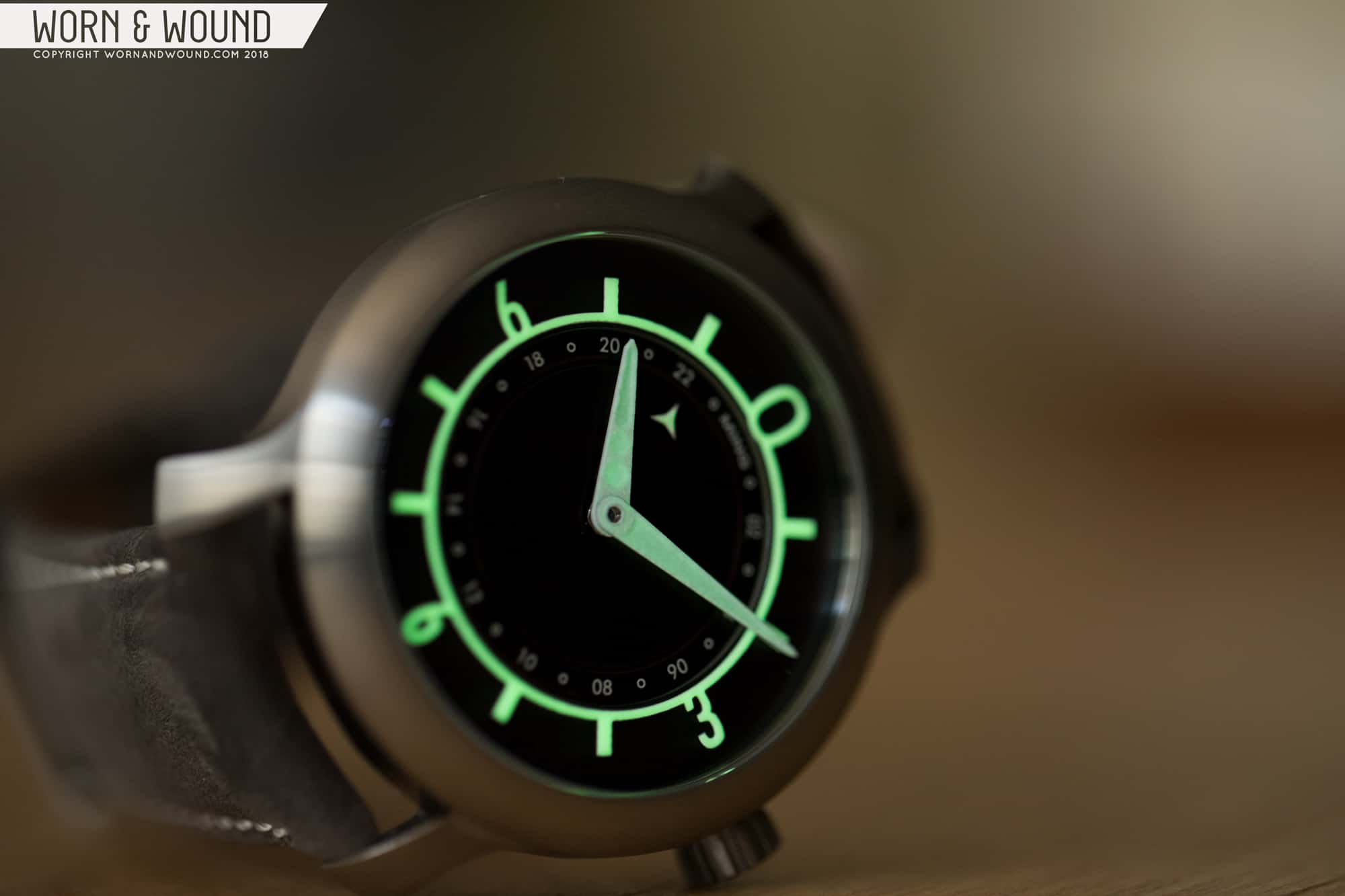 Dial colors are either in black or a unique ruby red. I can’t bring to mind another watch dial in that red color, though it does behave similarly to the blue sunburst dial on my 2017 Seiko 62MAS reissue, which alternates between dark blue and near black as it reflects ambient light. I figure that when buying a watch this unique, one would probably go with the ruby dial and just let the thing fly its freak flag—though the black dial is equally as handsome and a notch or two more formal.
Dial colors are either in black or a unique ruby red. I can’t bring to mind another watch dial in that red color, though it does behave similarly to the blue sunburst dial on my 2017 Seiko 62MAS reissue, which alternates between dark blue and near black as it reflects ambient light. I figure that when buying a watch this unique, one would probably go with the ruby dial and just let the thing fly its freak flag—though the black dial is equally as handsome and a notch or two more formal.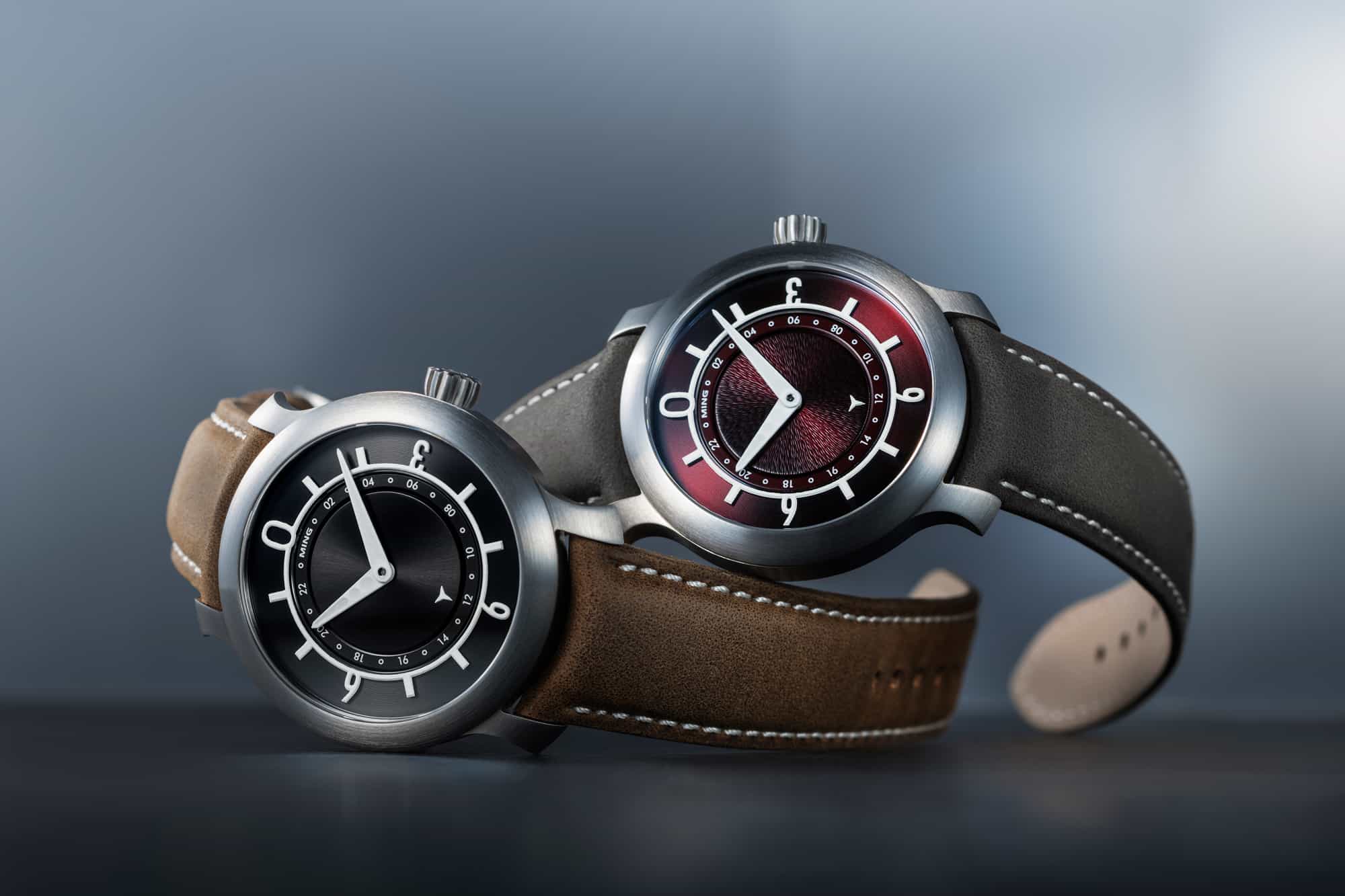
The sapphire crystal has five layers of anti-reflective coating on each side, and with the triple-gasket crown the 17.03 achieves 100 meters of water resistance. This seaworthiness, plus the reasonable size and handsome dial, sets the Ming squarely into the dressy tool watch, or DTW, category that Ilya and I dreamed up.
The lugs are stylized and shapely, and they include two sets of spring bar holes, one designed to work with the close-fitting straps and bracelet from Ming, the other set designed to accommodate third-party straps that require straight spring bars. This double drilling is welcome, as some bracelet-equipped watches compromise the position of straight spring bars (for example, the $10,000 Tiffany CT60 Dual Time has this problem). Inside the lug, one finds an engraved ‘(‘ next to the holes intended for curved spring bars and a ‘|’ next to those intended for straight ones.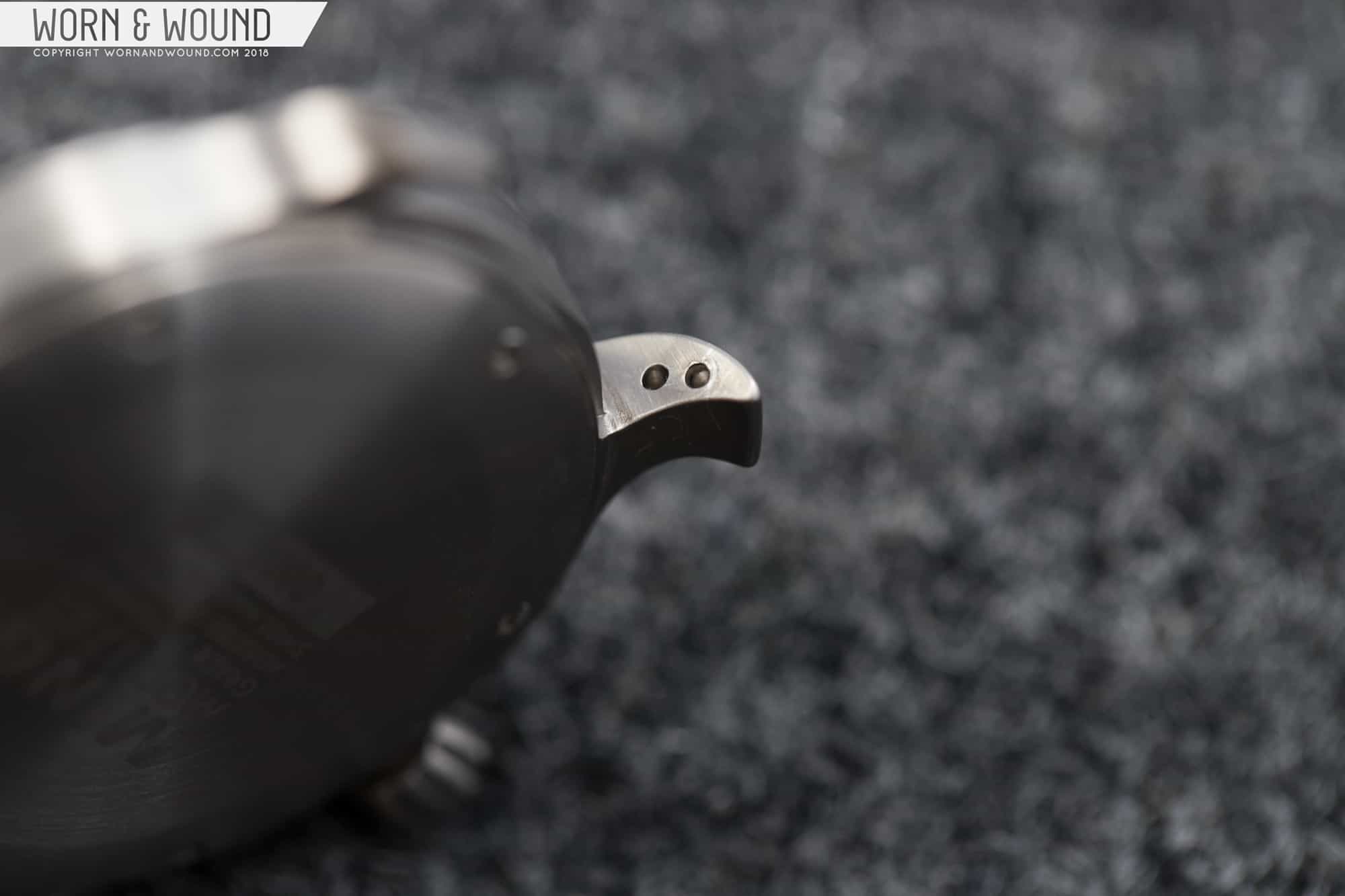 Both of the straps and the optional bracelet are equipped with a quick release system that should make strap changes easier. I’ve never been a fan of quick release spring bars because they seem less reliable (what happens when they break?) and because the straps require cut outs at stress points, but Ming has gone with a unique two-sided system that seems like a move in the right direction.
Both of the straps and the optional bracelet are equipped with a quick release system that should make strap changes easier. I’ve never been a fan of quick release spring bars because they seem less reliable (what happens when they break?) and because the straps require cut outs at stress points, but Ming has gone with a unique two-sided system that seems like a move in the right direction.
The two included padded straps are in chocolate and anthracite nubuck suede, both with white stitching. The optional titanium bracelet will run you an additional $400, which isn’t entirely out of touch with normal pricing, especially in titanium. The bracelet transforms the 17.03 into a water-ready sport watch, yet it also dresses it up for full-on DTW aplomb. Links are conveniently removed or added with the included flat-head screwdriver. The signed butterfly clasp works as it should, feels secure, and the interlocking end links form a visually seamless connection.
Six galvanized titanium screws hold the case back on. Titanium has a tendency to cold weld itself together, so the galvanization prevents that. Case back engraving is uneventful, with specs and individual serial numbers forming a tidy, centered square.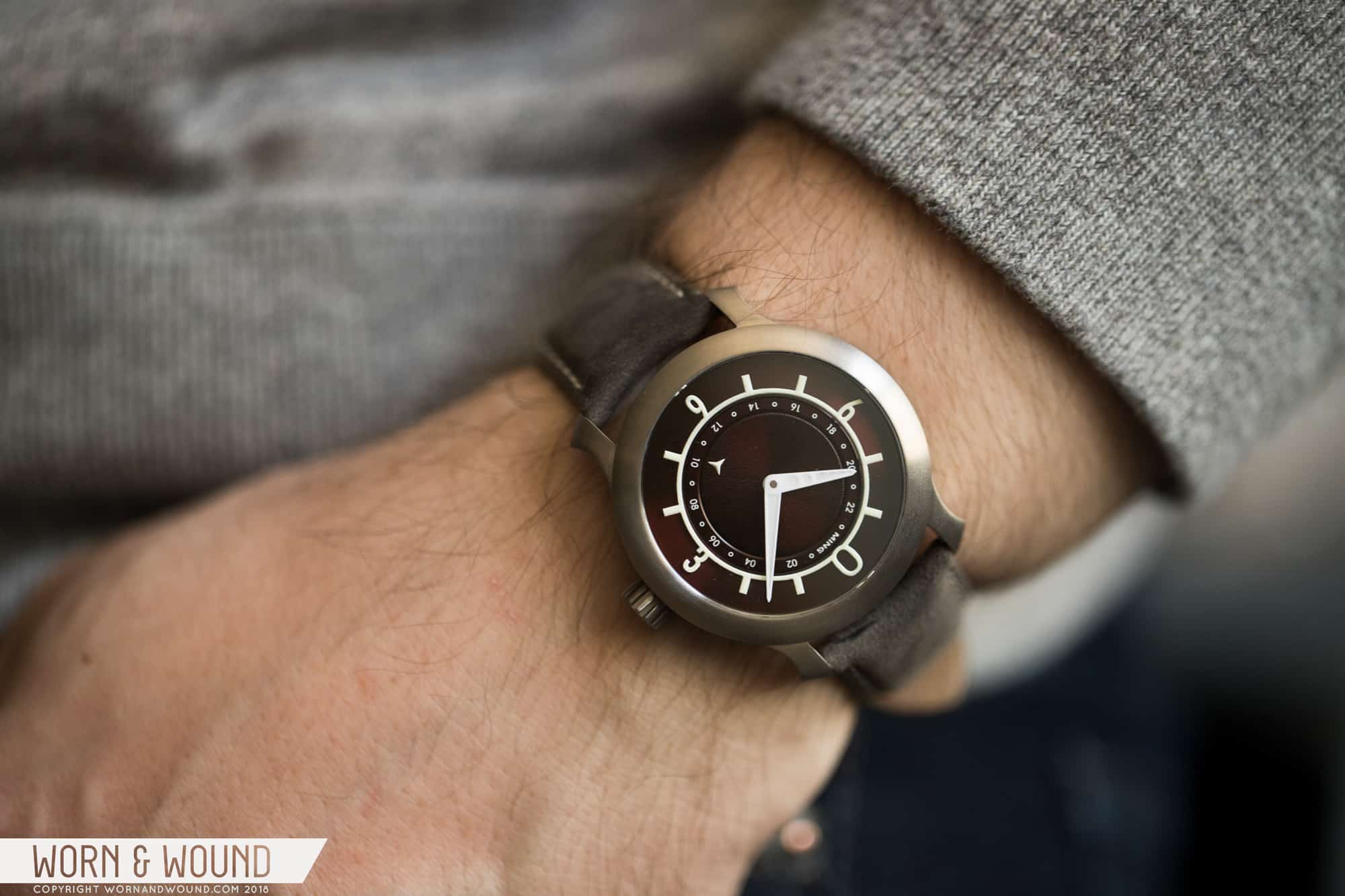
I’ll be repeating myself, but I feel compelled to mention that young, small, independent (and especially independently funded) design houses like Ming are free to create without the burdens of built-up consumer expectations, the ensuing brand loyalty, or the inertia of an extensive back catalog. Eventually all those burdens may be very real for Ming, but for the moment this “horological collective” is unbound, and the 17.03 seems a celebration of that creative freedom—which, for me, is the best aspect of the so-called micro-brand phenomenon. I applaud Ming for its fearless pursuit of an original design, for using materials in unconventional ways, and for their direct-to-consumer distribution which keeps their prices accessible. Whether you like the watch or not, you have to love how the Ming 17.03 contributes to today’s world-wide conversation about watch design. Ming









 Featured Videos
Featured Videos




